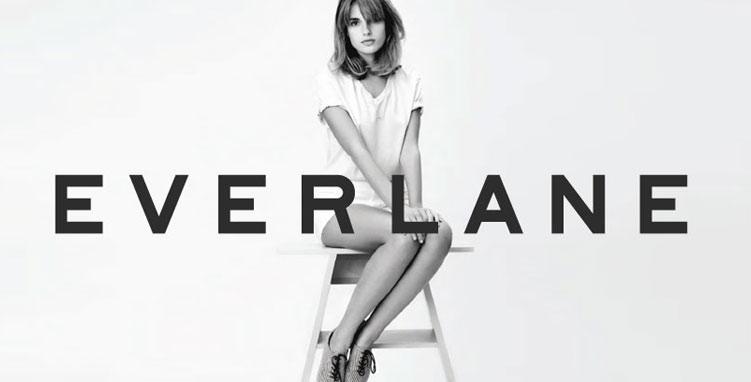In a world increasingly cluttered with fast fashion and fleeting trends, two brands are rising above the noise, championing a ethos of minimalism that goes beyond mere aesthetics. Everlane and COS have carved out their respective niches in the realm of contemporary clothing, each offering a distinctive approach to sustainable style. As consumers become more conscious of the environmental and ethical implications of their purchases, the question arises: can minimalism truly coexist with a sense of obligation? In this exploration of Everlane and COS, we delve into their philosophies, product offerings, and practices, examining how each brand embodies the principles of minimalism while striving to make a positive impact on the planet. Join us as we uncover the nuances that set these two brands apart in the quest for a wardrobe that reflects both simplicity and sustainability.
Exploring the Aesthetic: Distinctive Approaches to Minimalist Fashion
in the world of minimalist fashion, Everlane and COS stand out not only for their design philosophies but also for their commitment to ethical practices. Everlane champions clarity,offering consumers a peek into the costs and sourcing of its products. Their motto, “Radical Transparency,” resonates with shoppers seeking to make informed choices. Each piece reflects a clean aesthetic, where the design focuses on timelessness and wearability. key characteristics of Everlane’s design include:
- Neutral Color Palettes: Emphasizing versatility and simplicity.
- Functional Silhouettes: Prioritizing comfort without sacrificing style.
- High-Quality Materials: Sourced with an eye towards sustainability.
On the other hand,COS takes a slightly different approach,marrying minimalist design with an avant-garde twist. Their pieces frequently enough feature architectural shapes and innovative textiles, appealing to those who appreciate artful simplicity.COS’s philosophy extends beyond aesthetics; they focus on longevity and sustainability, ensuring every item is made to last. Noteworthy aspects of COS that underline their unique positioning include:
- Timeless Designs: Merging modernity with classic styles.
- Sustainable Production: Prioritizing eco-friendly fabrics and processes.
- Seasonless Collections: Fostering a wardrobe built for longevity rather than fleeting trends.

Sustainability Practices: How Everlane and COS Shape Ethical Consumption
Both Everlane and COS have emerged as leaders in the quest for ethical consumption, redefining the notions of minimalist fashion through their sustainable practices. Everlane’s approach is rooted in radical transparency, allowing consumers to trace the journey of their products from raw materials to factory production. They prioritize animal welfare by choosing ethical materials like organic cotton and recycled polyester, while ensuring fair wages and safe working conditions for artisans. Their Choose What You pay model also empowers consumers to make informed decisions about their purchases by disclosing true costs and encouraging them to support sustainable creation.
In contrast, COS champions a timeless aesthetic, emphasizing not just sustainability but also longevity in fashion. Their commitment to reducing waste is showcased through the use of recycled and organic fibers, with a focus on creating versatile pieces that stand the test of time. Additionally, COS’s collaboration with organizations like the Better Cotton initiative signifies a dedication to improving cotton farming practices globally. Through both brands, consumers can experience how style can align with values, as they create wardrobes that reflect their commitment to the planet and its people.

Price Points and Value: Analyzing Cost versus Quality in Minimalist Style
when examining the price points of Everlane and COS, one quickly realizes that both brands position themselves within a similar range, yet offer distinct interpretations of minimalist style. Everlane advocates for obvious pricing, often breaking down the cost of materials, labor, and transportation, allowing consumers to appreciate the value behind the price tag. This transparency can foster a sense of trust, especially for those who value ethical consumerism. Conversely, COS employs a slightly higher price point structure, justifying it with an emphasis on timeless design and high-quality fabrics, appealing to shoppers who are willing to invest more for longevity and sophistication.
Ultimately, navigating the cost versus quality debate requires careful consideration of individual priorities. Shoppers looking for a more budget-friendly option that doesn’t skimp on style may find Everlane to be a fitting choice. In contrast, those desiring a more curated and luxurious feel might lean towards COS. To further illustrate this comparison, consider the following table, which highlights key offerings from both brands:
| Brand | Typical Price Range | quality Focus | Transparency |
|---|---|---|---|
| Everlane | $$ – $$$ | Basic staples, everyday wear | High |
| COS | $$$ – $$$$ | Timeless pieces, luxurious materials | Moderate |

Shopping experience: A Look at Customer Engagement and Brand Loyalty
The shopping experiences at Everlane and COS are tailored to foster deep customer engagement through minimalist aesthetics and ethical practices. Both brands aim to cultivate brand loyalty by prioritizing transparency and sustainability in their operations. Everlane excels in its “Radical transparency” ethos,which demystifies pricing and manufacturing processes for consumers. Its interactive website and engaging social media presence encourage dialog, allowing users to feel personal connections with the brand.COS, on the other hand, emphasizes a timeless design philosophy that resonates with consumers seeking versatile, high-quality staples. Their stores are frequently enough designed as serene spaces that invite exploration,enhancing the overall shopping experience by encouraging customers to envision products within their own minimalist lifestyles.
Customer engagement is further driven by the values espoused by both brands. For instance, everlane frequently shares stories about their factories and workers, promoting a narrative that resonates with conscious consumers who value ethical sourcing. COS counters with a focus on sustainability through its commitment to circular fashion,appealing to an audience that prioritizes eco-friendliness. To illustrate the customer relationship strategies of both brands, the following table summarizes key engagement tactics:
| Brand | Key Customer Engagement tactics |
|---|---|
| Everlane |
|
| COS |
|
Wrapping Up
In the dynamic realm of fashion, where style meets ethics, the comparison between Everlane and COS illuminates a compelling narrative centered around minimalism with a conscience. Both brands echo the principles of simplicity and sustainability, yet they resonate differently through their respective philosophies, materials, and social commitments.
As we navigate this journey towards mindful consumerism, identifying which brand aligns more closely with our values can be both enlightening and challenging. Everlane’s commitment to radical transparency invites us to scrutinize the invisible threads behind our garments,while COS’s timeless designs urge us to invest in pieces that withstand the whims of fleeting trends.
Ultimately, the choice between Everlane and COS may not merely hinge on aesthetic preferences but also on how we define our personal intersection of style, ethics, and sustainability. As we stand at this crossroads,we are reminded that every purchase crafts a story—one that defines not only our wardrobe but also our impact on the world.Choosing wisely is not just a fashion statement; it is a step towards a more conscious and responsible future in fashion.








Leave feedback about this